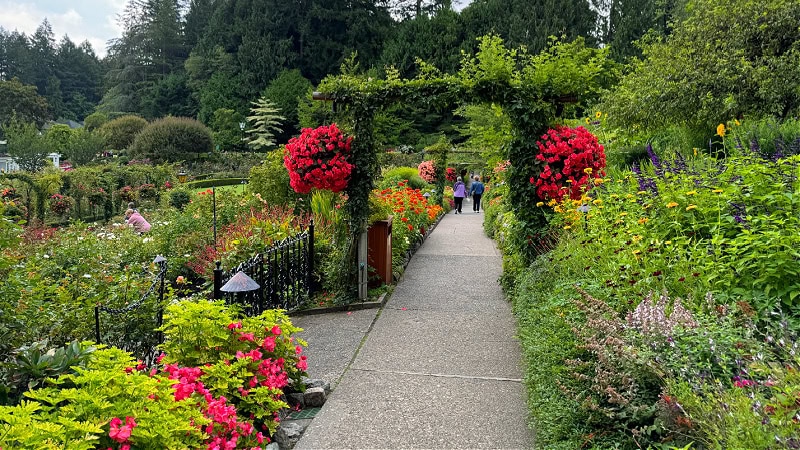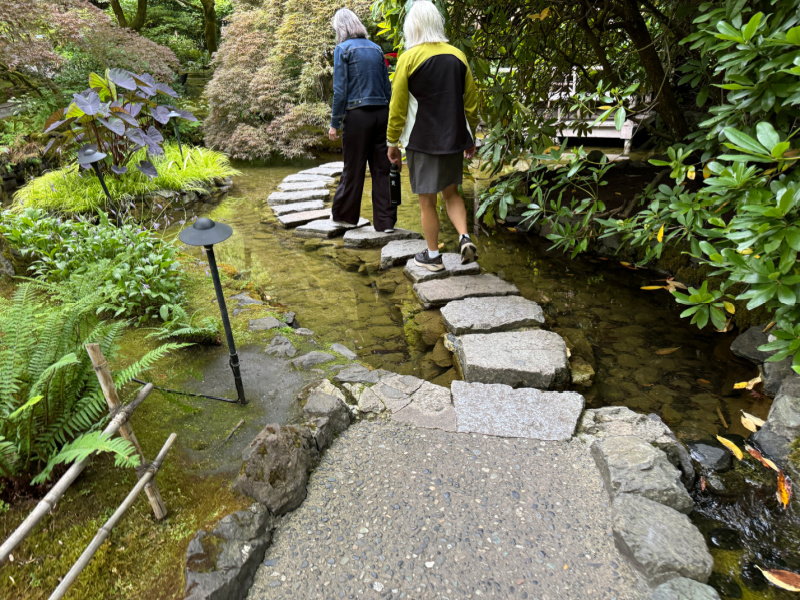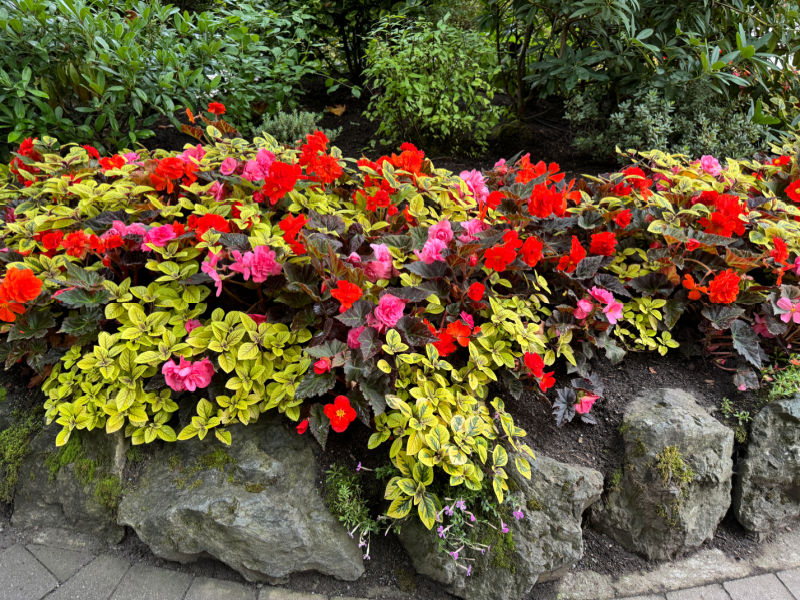Gardening Lessons Learned from Visiting Butchart Gardens in British Columbia

Feel Free To Share!
Discover timeless gardening lessons from a tour of Butchart Gardens in British Columbia.
Visit to Butchart Gardensone of Canada’s most stunning gardens, it’s inspiring. Located on Vancouver Island, this century garden is a masterpiece in design, plant combinations, and seasonal beauty. As I wandered its fertile paths, I found myself mentally noting tips and things to take back to my garden.
Here are some of the important lessons I learned during my visit to this farmer’s and farmer’s paradise:
1. Embrace Structural Strengths
One of the most striking features of Butchart Gardens is its impressive use of architecture. Whether it’s carefully pruned trees, formal hedges, or architectural elements such as pergolas and gazebos, structure provides the garden with year-round interest. Even when the flowers wither, the garden maintains its shape and beauty.
Take away: Add greenery, topiary, or hardscaping to your garden to create a strong frame. Consider planting boxwoods, yews, or small conifers to provide structure even in the off-season.

Although it may be hard to tell, this place, covered with climbing roses and clematis, was made of tree poles or long round logs. It was a very simple structure that could be budgeted for anyone to create.
Related: DIY Obelisk Arbor You Can Build!
2. Layering Plants Create Depth
The Sunken Garden, perhaps the most famous part of Butchart Gardens, is a great example of layering. From tall trees to mid-height trees, perennials, and creeping ground cover, each layer plays its role in the overall design.
Take away: Think of your garden in layers. Place tall plants or small trees in the back (or in the middle of island beds), followed by medium plants, and finally, use low-growing plants or ground covers on the front edge. This creates depth and visual thinking.


3. Color Consistency Is Key
Walking through Butchart Gardens is like walking through a living painting. The color palettes used are both deliberate and cool. In the Rose Garden, soft pinks and creams contrast beautifully with bold reds, while elsewhere, complementary shades of purple and yellow create a dramatic visual impact.
Take away: Plan your garden’s color scheme carefully. Minimize the amount of colors in any space to prevent visual chaos, and work with complementary or complementary colors.


4. Seasonal Interest Makes All the Difference
Butchart Gardens is a year-round attraction, and much of its magic lies in the careful selection of plants for each season. Spring brings tulips and cherry blossoms, summer bursts with dahlias and roses, fall with fiery maples and chrysanthemums, and winter displays evergreens and festive decorations.
Take away: Choose plants that offer beauty at all times of the year. Include early bloomers like hellebore, summer favorites like coneflowers, and fall highlights like ornamental grasses and asters. Don’t forget evergreens and berries for winter charm.


Related: See how to plant for blooms from Spring to Frost!
5. Points of Focus Draw the Eye
Throughout Butchart’s gardens, focal points are strategically placed to capture attention. Sculptures, water features, and stunning floral displays all serve as visual anchors in the expansive landscape.
Take away: Add focal points to your garden to create interest and direct the eye. A simple birdbath, trellis, or picture can serve as a good base. For larger spaces, consider a water feature or a swaying tree.


6. Methods Invite Tests
Winding paths are the hallmark of Butchart Gardens. They encourage visitors to explore everywhere, revealing new ideas and hidden surprises in every area.
Take away: In your garden, create pathways that lead to your space. Use materials such as stone, stepping stones, or bricks to create functional yet inviting pathways that add beauty and texture.


7. Combine Wild and Organized Things
Butchart Gardens strikes the perfect balance between wild and orderly. While hedges and borders are carefully maintained, places like the Japanese garden offer a more natural, calm feel.
Take away: Don’t be afraid to combine formal and natural elements. Pair well-trimmed edges with wild, flowing plants to add contrast and personality to your garden.


8. Small Spaces Can Feel Great
While Butchart Gardens covers a large area, even its smallest parts feel beautiful and inviting. Compact spaces are filled with layered plantings, vertical elements, and bursts of color that make them feel green and expansive.
Take away: Make the most of small spaces in your garden. Use vertical gardening, container plants, and layering techniques to create a full feel even in limited spaces.


Are you looking for small garden ideas? Try some of these in this article!
9. Water Features Add Tranquility
The sound of bubbling fountains, landscaped ponds, and stunning waterfalls all add to the sense of tranquility and beauty at Butchart Gardens. Water draws visitors in and enhances the experience of all the senses.
Take away: Even a small water feature, such as a tabletop fountain or birdbath, can add a sense of calm to your garden. For larger spaces, consider pools or waterfalls for maximum impact.


10. Gardens Are Always Changing
One of the most important lessons from Butchart Gardens is that a garden is never finished. Over the years, new sections have been added, and existing areas are updated or replanted to keep the area alive and relevant.
Take away: View your garden as a living, changing environment. Don’t be afraid to experiment, move plants, or add new features. Gardens are designed to grow and change over time.
I am always renovating my gardens when I want to try new plants, garden styles and just to experiment! You find out which plants thrive for you with minimal effort and create a beautiful garden with minimal work!
Final thoughts
A visit to Butchart Gardens is a reminder that gardens aren’t just about plants—they’re about knowledge, creativity, and the joy of nature. By combining the lessons of structure, layout, color, and focal points, you can transform your garden into a place of beauty and peace.
Whether you’re dealing with a sprawling backyard or a cozy patio, there’s something to learn from the magic of Butchart Gardens. So dream big, jump in, and start creating your own garden masterpiece.
The containers were crisp and beautiful as the entire garden shows how you can create a beautiful display no matter how much space you have.
Enchanting Container Gardens
Have you ever visited Butchart Gardens, or do you have a favorite garden spot that inspired you? Please let me know where I should visit next for more garden inspiration!
Happy Garden Inspiration!
Feel Free To Share!
Source link



